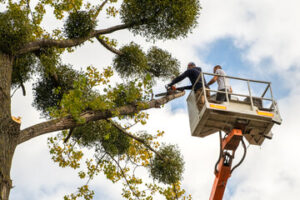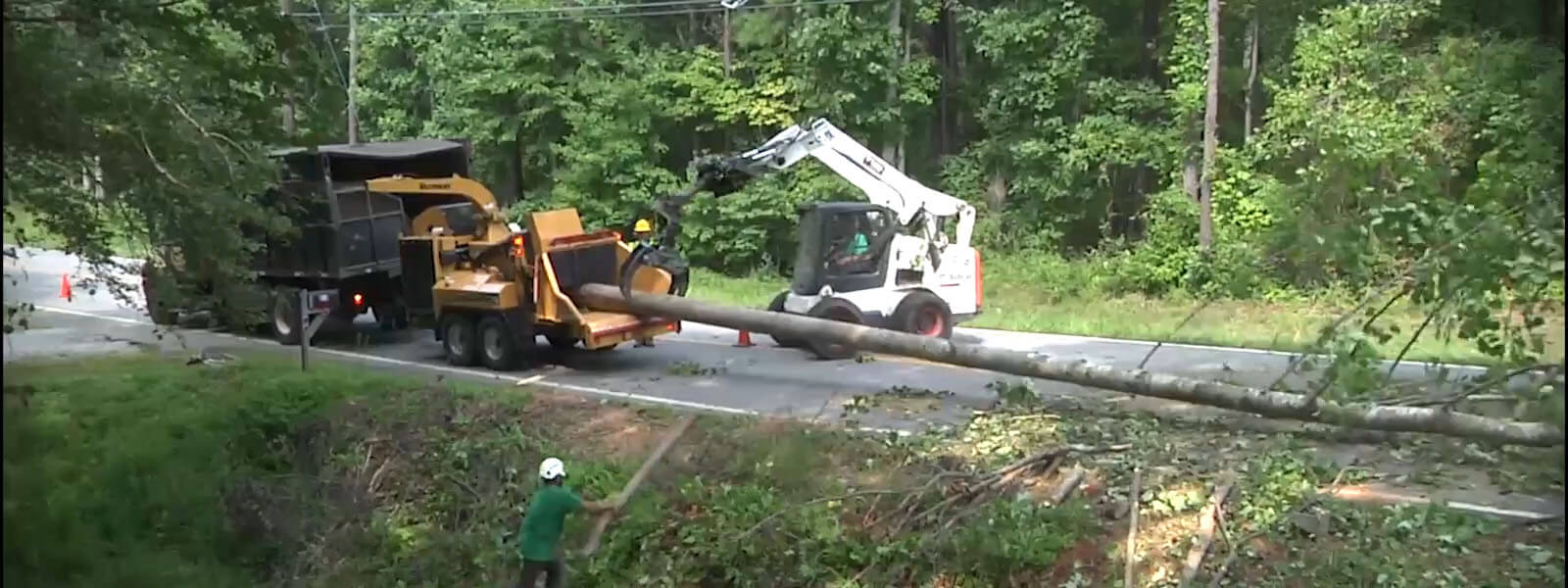Tree trimming is the process of removing branches and limbs that have grown overgrown. That allows sunlight to reach other parts of the plant, increases air circulation, and reduces stress on specific limbs. It also helps prevent damage from storms or potential hazards and encourages blooming and fruit production. Proper pruning should always include the correct cuts, which ensure sound wound closure.

Aesthetic pruning focuses on maintaining the shape and appearance of a tree while promoting healthy growth. It involves removing unnecessary branches or redirecting the development of selected limbs, stems, and twigs to achieve desired aesthetics. The trimming process also helps eliminate overlapping components and dense growth, creating a more spacious and inviting landscape. Visit https://www.irvinetreeservicepros.com/ for more details.
Uneven growth can leave trees scraggly, unbalanced, and distorted, but more than that, it can inhibit their health by preventing them from accessing the moisture and nutrients they need to thrive. In addition, overgrowth can block sunlight from reaching the lower parts of a tree and even neighboring plants.
Trimming can help correct these issues and be performed during various seasons. The fall and winter are ideal times for trimming deciduous trees, as they are dormant and will recover quickly. While this is the most common time for trimming deciduous trees, evergreens may also require trimming at this point.
During the spring, the focus shifts to thinning and shaping to create that lacy, leaves-dancing-in-the-wind look. That is where pruning shears are used to reduce the density of a tree, allowing more light to reach the ground and creating a more open canopy in your yard.
Aesthetic pruning can also be conducted regularly to encourage the production of fruit and flowers, which will add color and value to your property. A skilled professional can also prune a tree into decorative shapes, such as a natural arch or a pyramid. In addition, they can use their knowledge to recognize a tree’s blooming and fruiting seasons and trim accordingly. Finally, they can remove dead or diseased branches before they spread insects and fungus around your yard. That will protect your home and the health of surrounding trees, shrubs, and flowers. A professional also knows how to trim around power lines and other structures, reducing the risk of damage or outages caused by swaying or falling branches. They can also remove debris and limbs that have fallen during storms or other weather events. That protects your property and reduces the risk of injuries to your family or neighbors.
Tree trimming is primarily used to enhance the beauty of your landscape and improve your property’s overall appearance, but it also comes with health benefits. In the case of trees, regular trimming removes diseased, dead, loose, and overhanging branches that pose a hazard to people or property. It also helps boost the tree’s growth by eliminating extra, misshaped units and encouraging proper air circulation.
Additionally, trimming prevents damage caused by snow, wind, and rain by eliminating limbs that might break off or fall from the weight of these weather conditions. It can also reduce the fire risk by eliminating limbs that might catch on or rub against your house and removing branches growing into power lines.
Lastly, tree trimming can help prevent injuries by reducing the risk of falling limbs during storms or from people who might walk or pass under them. It can also help maintain safety by preventing branches from interfering with overhead wires and removing limbs that are overhanging or near sidewalks or roadways.
When done properly, trimming can help prevent tree diseases by removing unhealthy branches that can spread infections throughout the rest of the tree. Diseased limbs can cause broken or hanging branches, discolored leaves, and rotting bark. Regular trimming can help identify these problems early on and prevent them from spreading.
Finally, trimming can help promote plant health by allowing more sunlight to reach grass and other plants below the trees. Having too many branches can keep trees from getting the necessary water, nutrients, and sunlight needed to thrive. Trimming can also help with fruit production by reducing the number of over-ripe or malformed branches that might need more nutrients for the fruits to ripen. The resulting tastier and healthier fruit will benefit everyone who uses your yard.
Tree trimming is one of the most important property maintenance tasks for homeowners to perform. It ensures the safety of your family, neighbors, and visitors, as well as the structural integrity of your landscape. It also protects against expensive property damage caused by falling branches during storms or other natural calamities.
Regular pruning can reduce the risk of overhanging limbs, which could cause damage to your home or vehicles during a storm and injure pedestrians and pets. Proper pruning can help your trees achieve their full potential in height and width. That is done by removing dead or dying branches, promoting airflow and sunlight penetration throughout the canopy, and enhancing their overall appearance.
Overgrown limbs may threaten your home, garage, or power lines during severe weather conditions. They can also fall and damage the landscaping of your yard or neighboring properties, resulting in costly cleanup expenses. Keeping your trees trimmed consistently can prevent this from happening and improve the look of your property’s foliage.
When a tree is not trimmed, the branches can become damaged and fall off at any time, creating safety risks for people and property. They can also become a fire hazard, blocking visibility and potentially damaging cars or structures in the area. That is why having your trees trimmed regularly is essential, especially when you live near power lines.
Dead or dying branches compete with healthy ones for resources, including food, water, and light. Tree trimming eliminates these competing branches and encourages the growth of new, stronger limbs. Additionally, it prevents limbs from growing out of control or crossing over each other, which can result in severe wounds in the bark.
Hiring a professional, reputable company for your tree trimming needs is always best. That will ensure proper pruning techniques, adherence to safety guidelines, and high-quality artistry. Many neighborhoods see crews going door-to-door soliciting tree work, but these companies often need more insurance and experience to address your needs adequately.
Tree trimming improves the balance of a landscape by helping trees grow properly. It helps remove diseased, damaged, and dead sections that could affect the overall health of a plant. It also keeps pests from gaining access to these areas, so they can’t cause more damage in the future. In addition, trimming promotes the development of more branches to help keep a garden aesthetically pleasing.
An arborist can thin a tree using proper pruning techniques to increase light availability. Thinning a tree is typically done on larger plants in which the crown or single branches are “too dense,” causing them to compete for available sunlight. A Bartlett arborist can assess the health of your trees and shrubs to determine how much thinning is needed.
Regularly trimmed trees are less likely to fall during storms. Weak and diseased limbs are removed so stronger ones can grow and support themselves. That reduces the risk of a storm breaking those weak limbs off and sending them crashing down, which is expensive and dangerous for anyone nearby.
In addition, trees that are trimmed regularly will have fewer chances of growing into power lines and other structures, which can cause major problems for homeowners. A professional will know how to identify and remove limbs too close to your house or other important systems. That will save you from costly cleanups, repairs, and other expenses. Healthy, well-preserved trees around your property can also add to its value when you want to sell it. So, investing in a regular trimming schedule is worth the effort!


